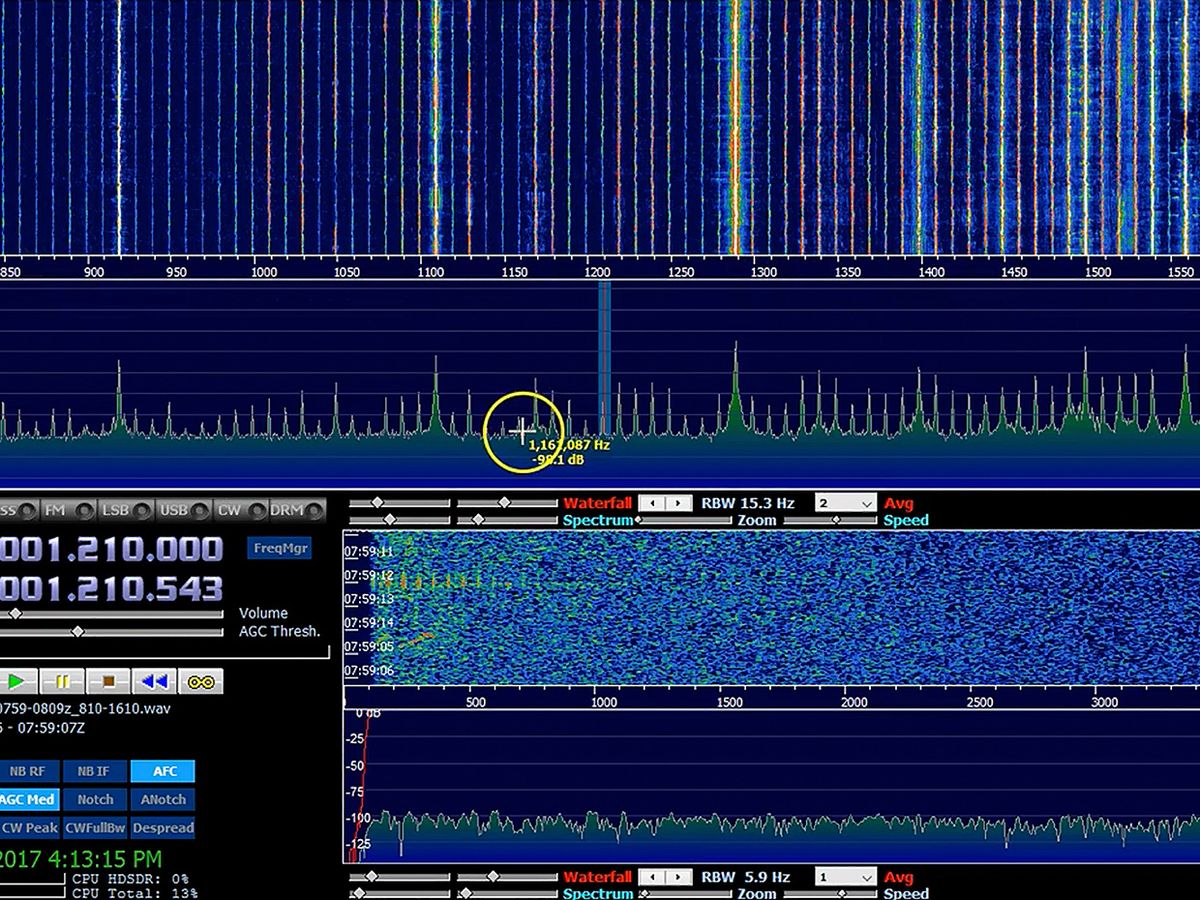Thomas Witherspoon is building a time machine, of sorts. With it, you’ll be able to pick a date and tune through an entire broadcast band as if you had a radio that could pick up transmissions from the past. Sure, well-established shows already make past episodes available, but with Witherspoon’s time machine you’ll be able to hear not just that programming but everything else that was on the air as well: the local news, the commercials, the pirate stations, even the mysterious number stations that lurk on shortwave.
Witherspoon’s time machine is The Radio Spectrum Archive. The technological advance that makes it possible is the proliferation in recent years of cheap software-defined radios (SDRs), which can digitize enormous swaths of radio spectrum. The SDR’s software can be used to select individual transmissions and listen to them live. Or the swath of spectrum can be recorded and played back through the software later, letting listeners tune into broadcasts just as if they were live.
Shortwave listeners and amateur radio enthusiasts have been using SDRs mainly to find interesting signals, “but not a lot of people thought about saving the spectrum and archiving it. But there were those who had,” says Witherspoon. Part of their motivation was to capture how radio has been evolving in the Internet era: “The AM broadcast band here in the States, the FM broadcast band, and...the shortwave broadcast band, are going through a lot of changes, especially the shortwave bands. A lot of stations are going off the air.”
Witherspoon began collecting archive recordings from around the world: For example, once a year he meets a friend visiting the United States from Australia. “We each take a 2- to 3-terabyte hard drive, fill it up with recordings before we meet each other, and then we exchange them.”
It’s the large size of the recordings that poses the biggest obstacle to Witherspoon’s plan to gather more recordings and make them publicly accessible online. One way the team is tackling the problem is by focusing on preserving recordings associated with newsworthy events. For example, “when the North Korea talks were happening, we were doing AM broadcast-band recordings. But since the news didn’t change a lot during the day, we chose to preserve only a 2-hour segment.” Witherspoon estimates that they currently have about 150 terabytes of recordings “curated to the point that it’s worth uploading them.”
Some of these recordings go back a surprisingly long way. Typically in a radio, the received carrier wave is shifted to an intermediate frequency before the final tuning within a broadcast band happens. In the analog era, shortwave radio enthusiasts discovered that they could tap into their radio’s circuitry and record the intermediate frequency signal directly to analog hi-fi VHS tapes (which were used because they had the bandwidth required to store the signal). The enthusiasts did this to help them hunt for distant radio stations. By making a spectrum recording, they could later play the recording back through the intermediate frequency tap point in their radios. They could then tune through the band as many times as they needed to hear all the station identifiers made at the top of each hour by broadcasters. A few of these tapes survived, such as one from Rhode Island that captured the AM band on 1 May 1986, just as news about the Chernobyl disaster was first filtering into the West.
The Radio Spectrum Archive is currently working with the nonprofit Internet Archive to host recordings and make them publicly available. One issue is the need to settle on a standardized spectrum-storage format. Once that is done, then it’s hoped a Web-based interface can be created to browse and play back the recordings. Witherspoon is seeking volunteer developers to work on this interface.
Witherspoon believes the value of The Radio Spectrum Archive will become more and more evident over time: “That’s the reason I play the recording from 1986. That gives us a little bit of that temporal distance, so that we can see the value in it.”
Stephen Cass is the special projects editor at IEEE Spectrum. He currently helms Spectrum's Hands On column, and is also responsible for interactive projects such as the Top Programming Languages app. He has a bachelor's degree in experimental physics from Trinity College Dublin.



